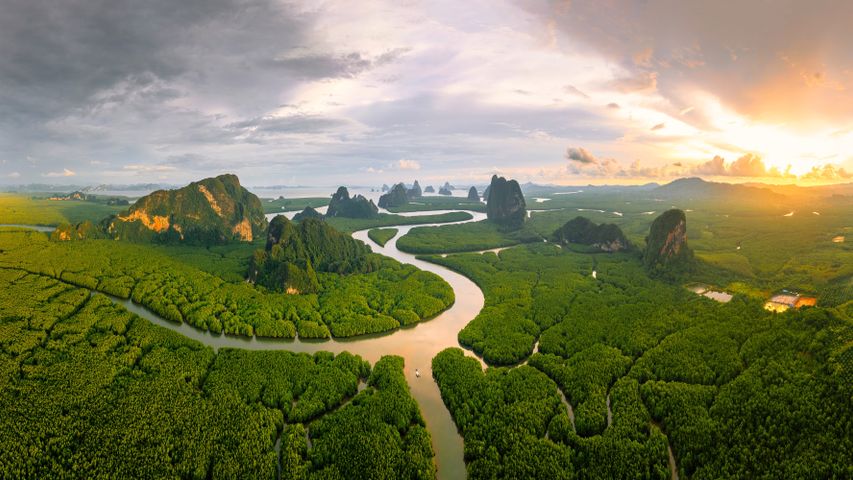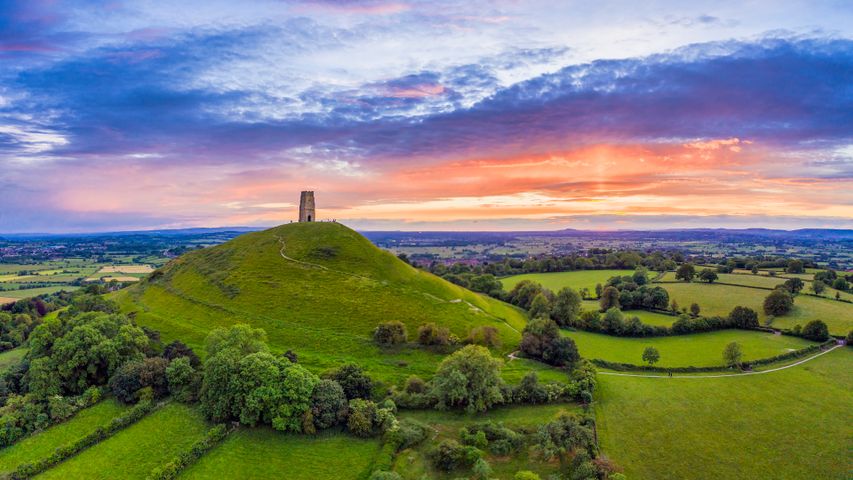Mangrove forest in Phang Nga Bay, Andaman Sea, Thailand
© Ratnakorn Piyasirisorost/Getty Image
Celebrating the tropics. International Day of the Tropics
Only in the tropics do forests grow in salt water. Take these mangrove trees in Phang Nga Bay in southern Thailand, one of the largest mangrove forests in the country. Adapted to thrive in coastal marshes and swamps, mangroves can filter saltwater and withstand storms. Virtually all mangrove forests grow in tropical regions where they protect coastlines, acting as a buffer against storms and floods.
On 29 June, the United Nations celebrates the International Day of the Tropics, a moment to focus on this beautiful region and its challenges. The tropics are roughly defined as the area above and below the equator between the Tropic of Cancer and the Tropic of Capricorn. By 2050, the UN estimates the tropics will be home to most of the humans on Earth, and two-thirds of the world’s children. It is also the poorest part of our world and the most vulnerable to global warming.
Phang Nga Bay on the Andaman Sea is one of Thailand’s most treasured sites. About 150 square miles in size, the bay contains numerous limestone islets, tower karsts, cliffs, caves and lagoons. Much of it is protected as it is within the Ao Phang Nga National Park, created in 1981, whose most famous landmark is Ko Tapu. This tall cylindrical rock is narrower at its base than at its top and featured in the Bond movie The Man with the Golden Gun. The real star of Phang Nga, however, is the mangrove. Resilient and beautiful, mangroves reflect the qualities of the tropics they inhabit.
Related Images
Bing Today Images





 Descending the Col du Tourmalet in the French Pyrenees during the 2021 Tour de France
Descending the Col du Tourmalet in the French Pyrenees during the 2021 Tour de France
 St. Michael's Church Tower on Glastonbury Tor, Glastonbury, Somerset, England
St. Michael's Church Tower on Glastonbury Tor, Glastonbury, Somerset, England
 Aerial view of Everglades National Park, Florida, United States
Aerial view of Everglades National Park, Florida, United States
 Mount Hamilton, San Francisco Bay Area, California, United States
Mount Hamilton, San Francisco Bay Area, California, United States
 Torres del Paine National Park, Patagonia, Chile
Torres del Paine National Park, Patagonia, Chile
 Rainbow over Wasson Peak, Saguaro National Park, Arizona, United States
Rainbow over Wasson Peak, Saguaro National Park, Arizona, United States
 Superbloom in Carrizo Plain National Monument, California, United States
Superbloom in Carrizo Plain National Monument, California, United States
 Giant's Tomb in autumn, Bouillon, Belgium
Giant's Tomb in autumn, Bouillon, Belgium

